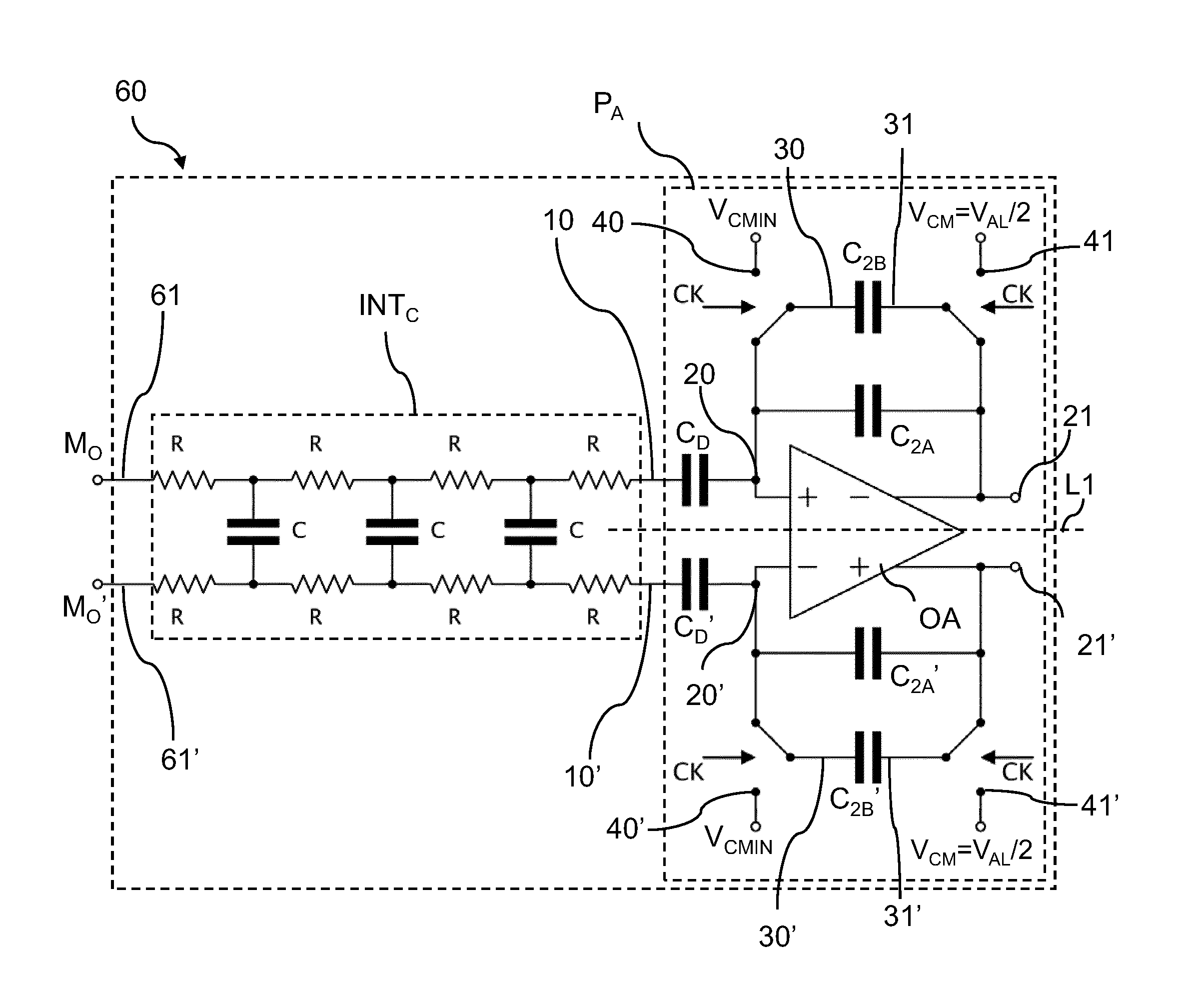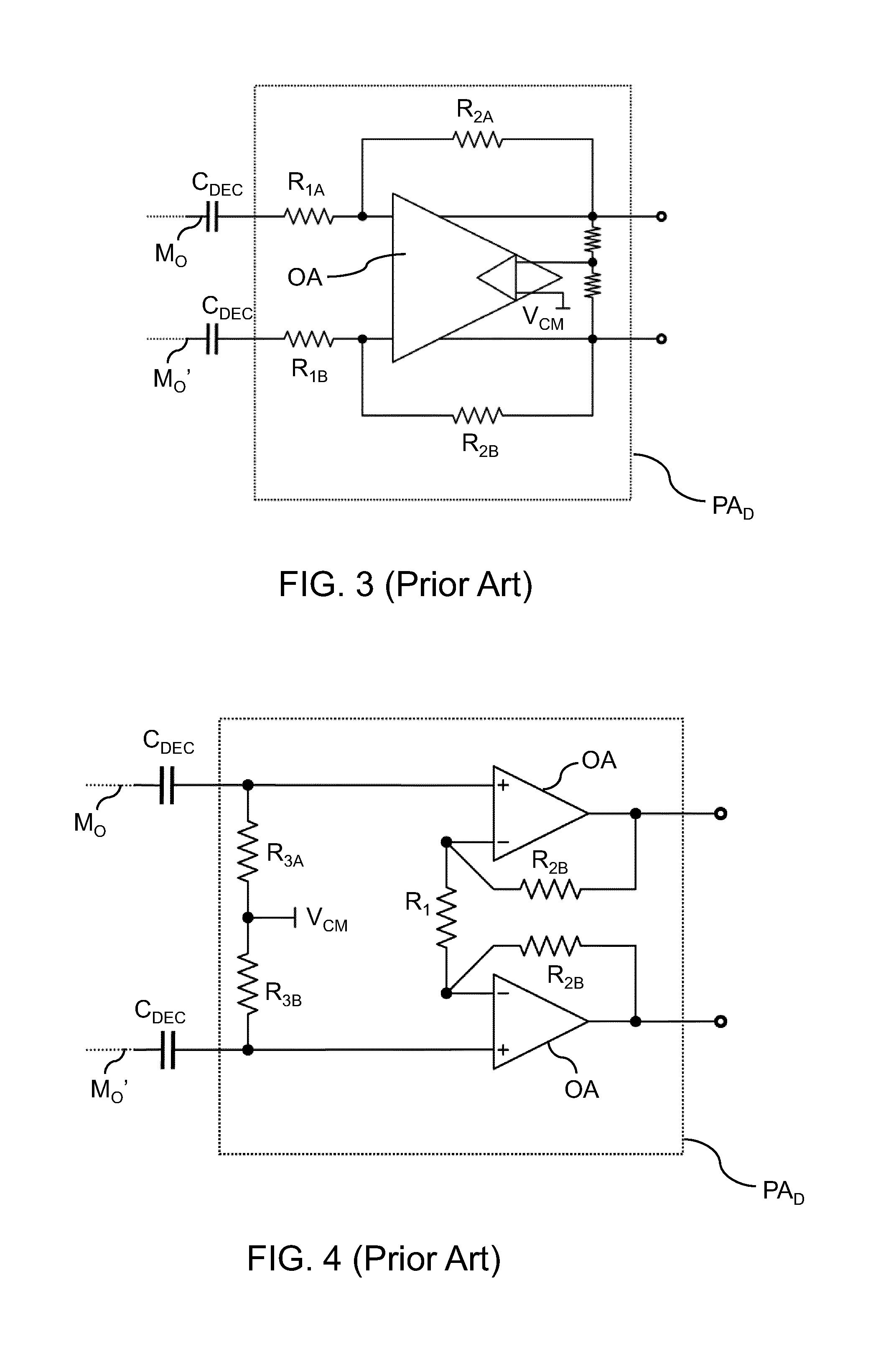Microphone Preamplifier Circuit
- Summary
- Abstract
- Description
- Claims
- Application Information
AI Technical Summary
Benefits of technology
Problems solved by technology
Method used
Image
Examples
Embodiment Construction
[0030]In the attached figures identical or similar elements will be indicated with the same reference numbers / symbols.
[0031]FIG. 5 shows a very schematic view of an embodiment of mobile terminal 5, such as for example a mobile phone 5, comprising a microphone circuit MCD. According to an embodiment, and without for this reason introducing any limitation, the microphone circuit MCD may be similar to the differential microphone circuit MCD represented in FIG. 2. The microphone circuit MCD comprises a microphone 3, a microphone's biasing network and two differential output nodes MO, MO′ (represented in FIG. 6). According to an embodiment, the microphone's biasing network may be identical or similar to the known biasing network of FIG. 2.
[0032]The mobile phone 5 comprises a circuit board 6 comprising a chip 7 comprising an integrated microphone preamplifier circuit 60. According to the embodiment shown, the circuit board 6 further comprises an analog to digital converter 70 and a digita...
PUM
 Login to view more
Login to view more Abstract
Description
Claims
Application Information
 Login to view more
Login to view more - R&D Engineer
- R&D Manager
- IP Professional
- Industry Leading Data Capabilities
- Powerful AI technology
- Patent DNA Extraction
Browse by: Latest US Patents, China's latest patents, Technical Efficacy Thesaurus, Application Domain, Technology Topic.
© 2024 PatSnap. All rights reserved.Legal|Privacy policy|Modern Slavery Act Transparency Statement|Sitemap



